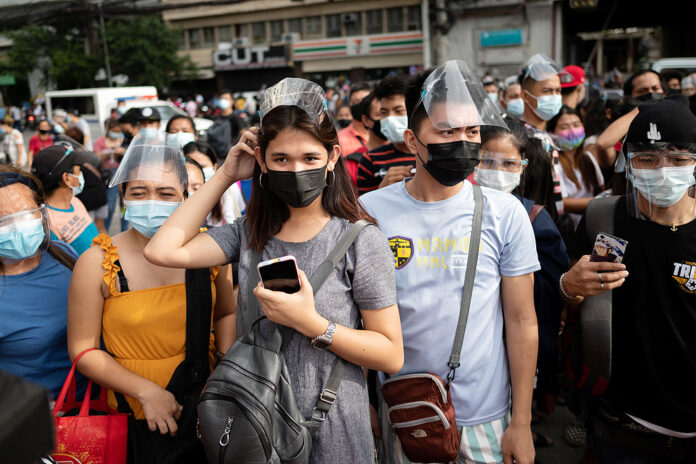MAYORS in the capital region want the government not to require face shields anymore, except in critical areas, amid decreasing coronavirus infections.
“Critical areas include hospitals, barangay health centers and public transportation,” Metropolitan Manila Development Authority (MMDA) Chairman Benjamin “Benhur” de Castro Abalos, Jr. said by telephone on Monday.
Metro Manila mayors made the recommendation to an inter-agency task force during a recent meeting, he said.
Manila City Mayor Francisco “Isko” M. Domagoso on Monday signed an order allowing residents of the capital not to wear face shields anymore except in hospitals.
The order cited a report that the task force favored lifting the face shield requirement.
Mr. Domagoso urged businesses in the Philippine capital to start accepting customers who are only wearing face masks.
The Manila chief has said there’s no evidence that face shields, which he said only adds to the expenses of Filipinos, prevent the spread of the coronavirus.
“Your requests, letters and messages to study the use of the face shield carefully have been heard,” Mr. Domagoso said in a statement. “All we have to do is wear a face mask to somehow reduce your daily expenses because of face shields.”
“We have the same intention,” Mr. Abalos said of Mr. Domagoso’s order. “Maybe there was no proper coordination. He was not present in our last meeting.”
People should continue to use face shields pending review by the task force of the mayors’ proposal, presidential spokesman Herminio L. Roque, Jr. told a televised news briefing.
Mayors should follow the task force, which “exercises derivative authority from the President,” he said. “All mayors are under the supervision of the President.”
Mr. Roque said the order of Mr. Domagoso, who is running for president next year under a rival political party, is void “for being in violation of an existing executive policy decreed by the President himself in the exercise of police powers.”
Health officials were set to meet with task force members on Monday to submit their own recommendations, Health Undersecretary Maria Rosario S. Vergeire separately told an online news briefing.
Face shields are only required in closed and crowded areas.
Other cities in the country such as Davao have issued similar ordinances making the use of face shields voluntary.
Meanwhile, malls in the Philippine capital and nearby cities will adjust operating hours starting mid-November.
This was after Metro Manila mayors lifted the general curfew in the capital region last week along with the easing of the lockdown to Alert Level 2.
Malls in Metro Manila will operate from 11:00 a.m. to 11:00 p.m. beginning Nov. 15. Operations during weekends and holidays may start as early as 10 a.m.
The OCTA Research Group from the University of the Philippines earlier said Metro Manila was back to where it was before it struggled to contain a spike in infections spurred by a highly contagious Delta variant.
Daily coronavirus infections in the Philippines could fall to fewer than 1,000 by the end of the month, it said.
The granular lockdowns in the capital region had helped reverse a surge of the more contagious Delta coronavirus variant, OCTA fellow Fredegusto P. David told CNN Philippines on Friday.
The capital region was placed under Alert Level 2 from Nov. 5 to 21 amid decreasing infections.
Under the lockdown level, businesses may operate indoors at 50% capacity. They will get an additional 10% capacity if they have a so-called safety seal from the government. For outdoor operations, they may operate at 70% capacity.
It will also allow minors to leave their homes. Local government units can impose “reasonable restrictions” on their movements as long as they are not stricter than higher alert levels.
Ms. Vergeire had said the alert level system first tested in Metro Manila would be expanded nationwide by Dec. 1.
The state started granular lockdowns in the capital region in mid-September to spur business activity. — Kyle Aristophere T. Atienza and Russell Louis C. Ku

